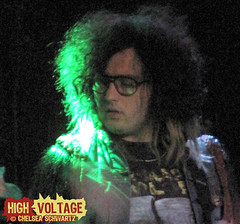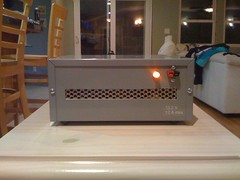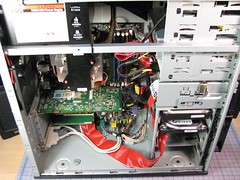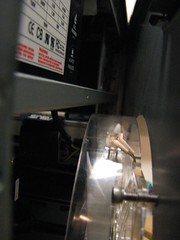If you enjoy Rvs you already know that a major part of the fun with Rving is getting away from everything. You can just pack up the Rv and head out to get some well deserved rest and free time without having to deal with the hassles of day-to-day living. These restful, relaxing, memory development Rv trips should not be jeopardized by something as straightforward as a 12-volt electrical question ruining your vacation.
If you've been Rving for any estimate of time you are already aware that a good part of the devices and accessories in your Rv control off of 12-volt Dc power. 12-volt Dc or Direct Current is electricity supplied by the Rv batteries. Dc electricity flows in one direction, from negative to positive. 12-Vdc electricity is stored in the Rv batteries and supplies power for components, devices and appliances that control off of 12-volts.
High Voltage Power Supply

These 12-volt devices include overhead lights, the water pump, vent fans, furnace fan, range hood fan, Lp gas leak detectors, stereos, 12-volt Tvs and the refrigerator when it's operating in the Lp gas mode. When you go camping you rely on these 12-volt items to control properly, especially if you're dry camping without hook-ups. So what do you do when one of these 12-volt items quit working?
For the sake of an example let's say that we are dry camping and our 12-volt water pump quits working.
I am convinced that just about anybody is capable of troubleshooting a 12-Vdc problem, and in many cases repairing the question without it ruining your camping trip. For starters you will need a integrate of straightforward tools to assist you in troubleshooting your Rv's 12-volt electrical system.
1). An inexpensive 12-volt test light.
2). A multi-meter that can test for Dc power.
Both of these are available at local auto parts stores. You should also keep some electrical tape, various size wire nuts, 12-volt light bulbs and 12-volt fuses on hand. Check the amperage of the fuses used in the power distribution box and keep an assortment. If you're aware of any inline fuses used on any of the 12-volt devices keep these on hand too.
Now, try to resolve the last time the water pump nothing else but worked. Did you leave the Rv for a duration of time with the pump on? Is there water in the fresh water holding tank? Were you working on or colse to something else that could have affected the performance of the water pump? Try to think of all potential scenarios. Something might jar your memory resulting in a quick fix to the problem.
If not, the first step is to verify that the coach battery or batteries are expensed adequate to supply power to these 12-volt items. There are a integrate of ways to achieve a quick test on the coach batteries. You can use the monitor panel to check the health of the coach batteries. To get an literal, reading make sure the Rv is not plugged into electricity and turn on a integrate of overhead lights to place a small load on the battery. Check the reading at the monitor panel. (If you check the reading at the monitor panel when the Rv is plugged in to electricity it will give you fully expensed reading) A more literal, recipe is to test the battery with a multi-meter. Set the meter to read 12-Vdc and place the negative test probe on the negative battery concluding and the clear test probe on the clear battery terminal. A fully expensed battery will read in the range of 12.6 to 12.7 volts. If it reads less than 12-volts it is below a 50% state of payment and will need to be charged.
If the battery is fully charged, the next step is to make sure that any battery disconnect switch for the coach battery is turned on. If the battery disconnect switch is on, verify that other 12-volt devices in the Rv are operating properly. If there is 12-volt power to the interior of the Rv you need to check the fuse for the water pump in the power distribution center. resolve which fuse is for the water pump (fuses are normally labeled) and find a suitable ground for the 12-volt test light. Test both sides of the fuse for 12-volt power. If the test light only lights on one side of the fuse replace it with the permissible size fuse and try the water pump again. If there was power at both sides of the fuse check for 12-volts at the water pump switch. If there is voltage, and the switch is operating properly check the water pump wiring for an inline fuse.
Find a good ground for the 12-volt test light and probe the wire on both sides of the fuse. If there is only power on one side of the fuse replace it with the permissible size fuse and test the pump again. If there is power on both sides of the fuse check the water pump wiring connections at the wire nuts. It's potential for connections to come loose due to inordinate vibration. literal, any loose connections and try the pump again. If the pump still doesn't work feel the motor to see if it is hot to the touch. If the motor is hot, a thermal breaker may have been triggered. Allow the pump time to cool off and see if it re-sets itself.
If you perfect all of these tests and there is 12-volt Dc power advent to the water pump motor, and it still doesn't come on, chances are the water pump is bad and it will need to be replaced.
Troubleshooting a 12-volt electrical question in your Rv is not that difficult. Supervene the logical path of the gismo you are troubleshooting and see if you can resolve where the question is. It might be potential for you to save your well deserved vacation, some money and a trip to the Rv dealership too.
Note: If you don't feel comfortable performing your own maintenance or troubleshooting the 12-volt electrical system, take your Rv to a reputable fix town to have it checked out and repaired
Happy Camping!
Copyright 2006 by Mark J. Polk owner of Rv education 101
Rv Tip: Troubleshooting a 12-volt Dc problem



















